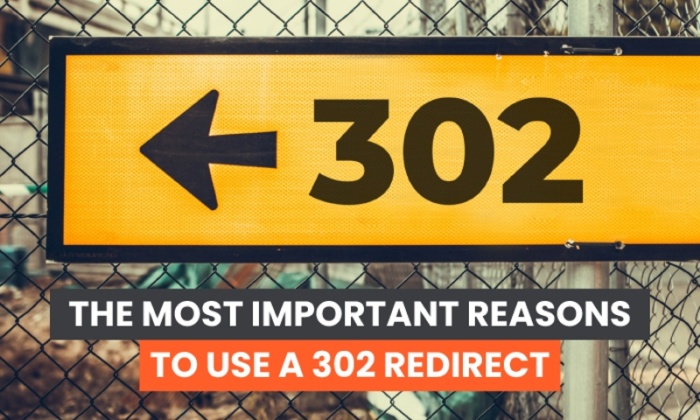The Most Important Reasons to Use a 302 Redirect

By Neil Patel
Not sure what a 302 redirect is or when to use them? Are you curious about the impact on your SEO efforts?
I’ve got good news: 302 redirects are actually pretty simple. At its core, a 302 redirect is a way to tell search engines and users that a page has moved temporarily and to direct them to a new page for a short period.
Simple enough, right?
The problem is using the wrong redirect can significantly impact SEO and user experience. This is why getting the redirect right is crucial to your overall digital marketing strategy.
So what’s the difference between the types of redirects, and when should you use a 302? Here’s what you need to know.
What’s the Difference Between a 302 Redirect and 301 Redirect?
A 302 redirect is an HTTP response status code that tells search engines a page has moved, but only temporarily. It then directs users (and search engines) to the new, temporary page.
A 301 redirect is a server-side HTTP response status code that tells users and search engines a page has permanently moved, and it won’t be coming back.
For users, there’s little difference between the two types of redirects. They get sent to a new (hopefully more useful) page regardless of the redirect type.
The core difference between a 302 redirect and a 301 redirect is the amount of time the redirect is in place, but a 302 also leaves something important behind: link equity and page rank.
When you use a 302 redirect, the original page usually maintains its Google ranking, so it shouldn’t impact your SEO efforts. However, a 301 redirect causes the original page to lose ranking and can cause it to be deindexed by search engines.
According to Google, the main reasons to use a 301 (permanent) redirect are:
- You’ve changed domains
- People access your site through multiple URLs
- You are merging two websites or pages
You might also use a 301 redirect when switching from HTTP to HTTPS or when you merge two related pages. Any time you move a page and have no intentions of bringing it back, use a 301.
When you use a 301 redirect, the original page is no longer considered by Google, which is the main reason you want to ensure you use the correct type of redirect.
Say you’ve spent years establishing a pillar content page to rank for a key term in your industry. You decide to take the page down for a few days to redesign and update the page. If you use a 301 redirect, Google thinks the page is gone forever and removes the page from indexing.
Ouch.
Use a 302 and Google knows the page is coming back.
The type of redirect you use severely impacts your SEO, so make sure you always use the correct type for the situation.
Four Reasons to Use a 302 Redirect
So, what are the exact …read more
Source:: Kiss Metrics Blog









